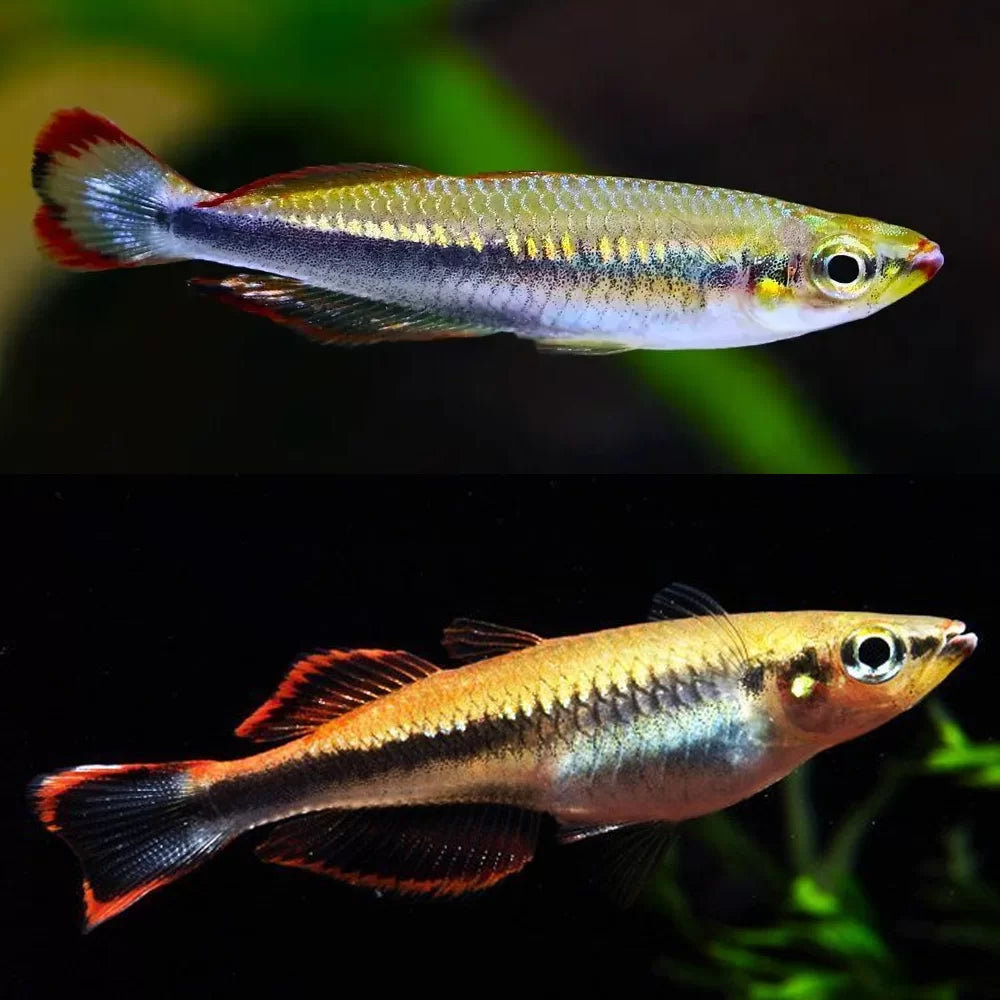Rainbowfish - Madagascar (Bedotia madagascarensis)
Rainbowfish - Madagascar (Bedotia madagascarensis)
The cool shimmer of their silver scales, smouldering red fins, and thick black markings make this bold fish unforgettable. It is a larger rainbow fish, reaching about 6 inches (15 cm) in the aquarium. Keeping a school of healthy Madagascan Rainbow specimens will reward the aquarist with an active display of beautiful colouration and hours of entertainment. It is also known as Madagascan Rainbow Fish and Red-Tailed Silverside.
The Madagascar Rainbowfish are great fish for the large tank fish keeper. They add visual interest and are able to adapt to a variety of conditions. Aquarists often find that the Madagascar Rainbowfish is more civilised than the other rainbow fish, making it suitable for pairing with a wider array of tank mates. They are a schooling fish and need to be kept in groups of at least 6 to be comfortable. But they are generally peaceful with each other and friendly with other species of similar size and temperament. These Rainbow fish do well with fish keepers that have a bit of aquarium experience, and they are a great fish to jump into breeding with.
Madagascar Rainbowfish are omnivores that feed on small insects and plant matter in their natural habitat. In captivity they are easy to feed, all they really need is a high quality flake or pellet food and occasionally live prey. Some good examples of suitable live food include bloodworms, tubifex worms, water fleas, or brine shrimp. These should be fed at least twice per week as a supplement to the prepared diet. If these are unavailable live, frozen (defrosted) substitutes would also be accepted. These fish should be fed twice a day and only what they can eat in less the 5 minute.
- Diet Type: Omnivore
- Flake Food: Yes
- Tablet / Pellet: Yes
- Live foods (fishes, shrimps, worms): Some of Diet - Bloodworms, tubifex worms, water fleas, or brine shrimp should be fed a couple times a week.
- Vegetable Food: Some of Diet - Algae wafers make a good source of vegetable food.
- Feeding Frequency: Several feedings per day - Feed twice per day and only what they can consume in less than 5 minutes.
Share


